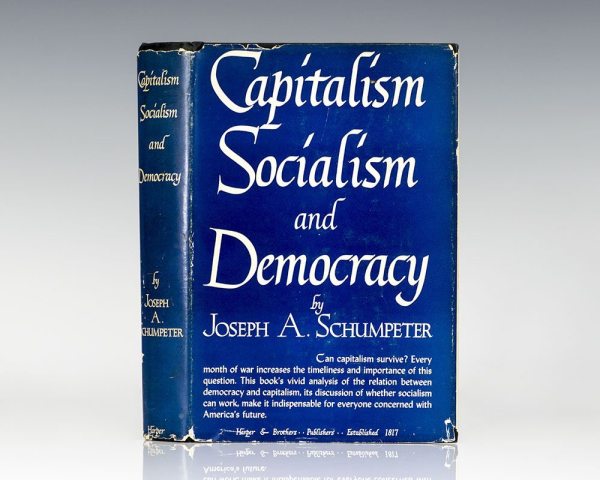
The Depression-era economist and political scientist, Joseph Schumpeter (1883-1950), worried about the stagnation of capitalism and globalization long before globalization was a thing (and he wondered whether capitalism would even survive). The term “creative destruction” that Schumpeter championed was a way to describe a process in which the old ways of doing things are destroyed and replaced by new, better ways. This idea is especially pertinent for today’s pandemic-era economic and socio-political climate: we know things must and will change, perhaps drastically, but no one knows how it will shake out. And how we handle the changes ahead will make all the difference.
Schumpeter posited that the disruption of existing industries would pave the way for innovation and new players. A staunch defender of capitalism, he maintained that it can only be understood as an evolutionary process of continuous innovation and “creative destruction.” That revolutionary idea has been accepted by many modern thinkers, but the pandemic is putting creative destruction and what comes out on the other side into sharp focus and urgency.
Capitalism he wrote, “is by nature a form or method of economic change and not only never is but never can be stationary.” The problem he saw was that the success of capitalism would lead to a form of corporatism featuring values hostile to entrepreneurial capitalism. Does this sound familiar? Looking at today’s emerging version of capitalism and multinational corporation dominance of markets it is very familiar. Schumpeter also worried that this process would hinder entrepreneurship.
Schumpeter’s classic Capitalism, Socialism, and Democracy is more than a dire judgment of capitalism’s future. It is also a defense of capitalism because capitalism sparks entrepreneurship. Schumpeter was among the first to lay out a clear concept of entrepreneurship by identifying the distinction between an inventor’s inventions and an entrepreneur’s innovations. He noted that entrepreneurs innovate not just by figuring out how to use inventions, but also by introducing new means of production, new products, and new forms of organization. These innovations, he argued, take just as much skill and daring as does the process of invention.
Innovation by the entrepreneur, he continued, leads to creative destruction as innovations cause old inventories, ideas, technologies, skills, and equipment to become obsolete. The question is not “how capitalism administers existing structures,” he wrote, “… [but] how it creates and destroys them.” This creative destruction, he believed, causes continuous progress and improves the standards of living for everyone.
The debate about how best to foster an innovative climate of collaboration continues to the present day. Innovation and continuous improvement are buzzwords in the outsourcing industry but creating a framework for actually making them happen is why I think the Vested sourcing business model is positioned to take on that challenge.
I appreciate the challenge and the tension implied in the concept of creative destruction. It’s disquieting but also encouraging that 80 years after Schumpeter used the term it is needed now more than ever with the Vested model and tools of collaboration, trust, innovation, continuous improvement, and sharing value to achieve the win-win guiding the way.
Leave a Reply
You must be logged in to post a comment.